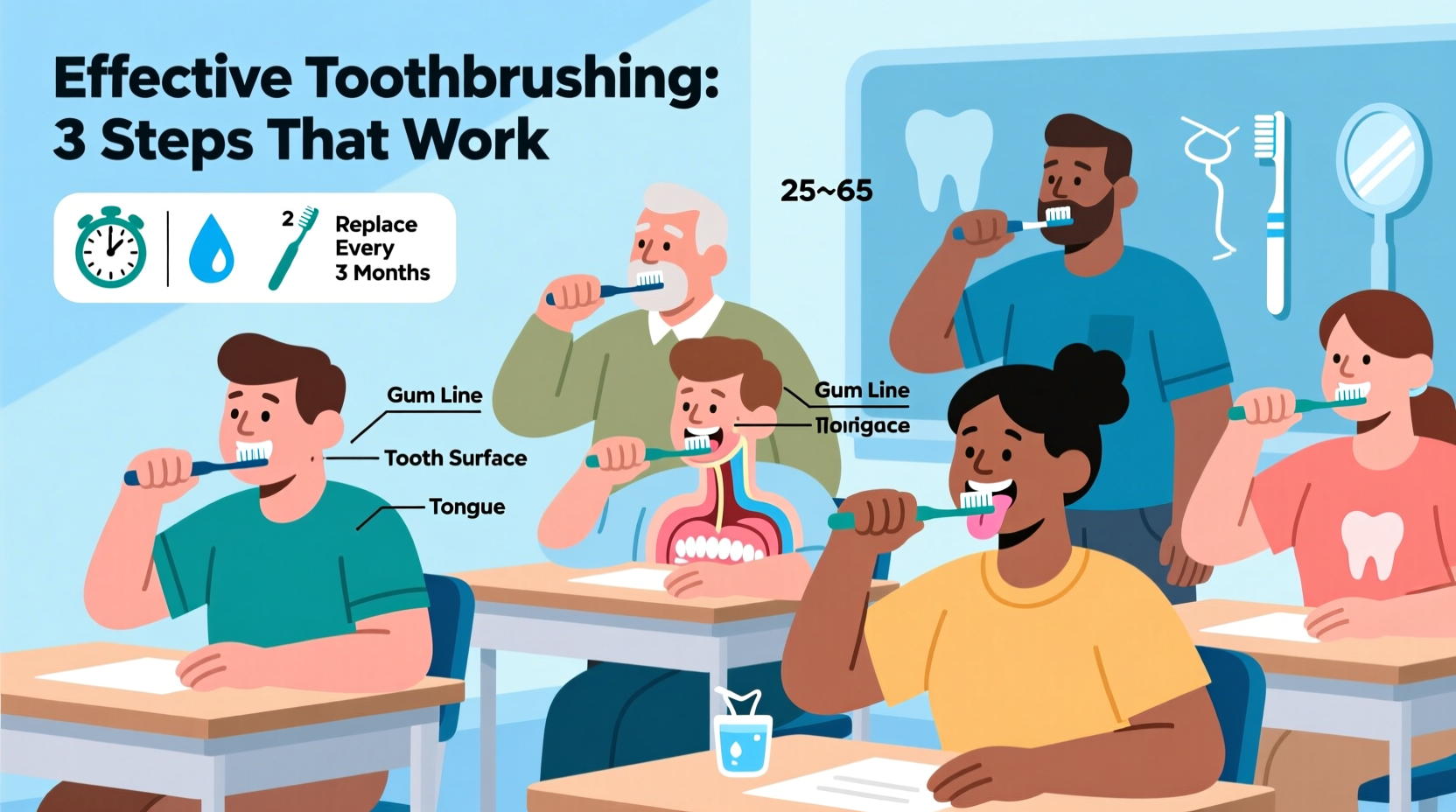Despite widespread access to dental care and information, many adults still struggle with basic oral hygiene. Poor brushing habits contribute to gum disease, cavities, and tooth loss—conditions largely preventable with consistent, correct technique. Teaching adults how to brush effectively isn’t just about demonstrating motions; it requires understanding adult learning principles, addressing misconceptions, and reinforcing behavior change over time. The most successful approaches combine hands-on instruction, personalized feedback, and motivational support.
Understanding the Barriers Adults Face

Adults often carry long-standing brushing habits, some of which may be ineffective or even harmful. Unlike children, they are less likely to adopt new routines without a clear reason. Common barriers include misinformation (“I’ve always brushed this way”), lack of perceived risk (“My teeth feel fine”), time constraints, and low health literacy. Additionally, physical limitations such as arthritis or visual impairments can make standard brushing difficult.
Effective instruction begins by identifying these obstacles. A 2023 study published in the *Journal of Dental Education* found that adults who received personalized assessments of their brushing effectiveness were 68% more likely to modify their technique than those given general advice.
Step-by-Step Guide to Teaching Proper Brushing Technique
Teaching an adult to brush correctly should follow a structured, interactive process. Relying solely on verbal instructions or pamphlets is rarely effective. Instead, use a sequence that combines demonstration, practice, and feedback.
- Assess current habits: Observe how the individual brushes, noting pressure, duration, angle, and coverage.
- Explain the “why”: Clarify how plaque buildup leads to gingivitis and decay, using simple language and relatable consequences (e.g., bad breath, bleeding gums).
- Demonstrate the modified Bass technique: Hold a model or use a mirror to show how to place the brush at a 45-degree angle to the gumline, using short, circular motions.
- Guide hands-on practice: Have the learner mimic the motion on a model or in their own mouth while you provide real-time feedback.
- Reinforce with tools: Recommend disclosing tablets or apps with timers and motion tracking to support consistency.
- Schedule follow-up: Reassess technique after two weeks to reinforce learning and adjust as needed.
“Adults retain new motor skills best when they understand the purpose, see a demonstration, and receive immediate corrective feedback.” — Dr. Lena Torres, Clinical Dental Educator
Do’s and Don’ts of Adult Toothbrushing Instruction
| Do’s | Don’ts |
|---|---|
| Use a soft-bristled brush and fluoride toothpaste | Use hard-bristled brushes or excessive pressure |
| Brush for two minutes, twice daily | Rush through brushing in under 60 seconds |
| Angle brush at 45 degrees to gums | Scrub horizontally across the gumline |
| Cover all surfaces: outer, inner, and chewing | Focus only on front teeth |
| Replace toothbrush every 3–4 months | Use frayed or worn brushes |
Real-World Case: Improving Outcomes in a Community Clinic
In a rural dental clinic in Oregon, hygienists noticed high rates of early periodontitis among middle-aged patients despite regular visits. They introduced a new protocol focused on active skill-building during appointments. Each patient was asked to brush in the chair using disclosing solution, which stains plaque red. After revealing missed spots, the hygienist demonstrated corrections using a model and guided the patient through a full two-minute session.
After six months, follow-up exams showed a 42% reduction in plaque index scores and a 30% decrease in gingival bleeding. Patients reported feeling more confident in their brushing ability and appreciated the non-judgmental, collaborative approach.
Checklist for Effective Adult Brushing Instruction
- ✅ Assess the individual’s current brushing method
- ✅ Explain the health risks of poor technique
- ✅ Demonstrate the modified Bass method clearly
- ✅ Allow time for guided practice with feedback
- ✅ Use visual aids like models or disclosing tablets
- ✅ Recommend a timer or smart toothbrush if needed
- ✅ Schedule a follow-up within 2–3 weeks
- ✅ Address physical or cognitive challenges (e.g., recommend adaptive handles)
Leveraging Technology and Behavioral Psychology
Modern tools can significantly enhance learning retention. Electric toothbrushes with pressure sensors and quadrant timers help users maintain proper duration and avoid damaging gums. Some models sync with smartphone apps that track brushing patterns and provide coaching.
Behavioral science also offers valuable insights. The Fogg Behavior Model (B = MAP) suggests that behavior change occurs when Motivation, Ability, and Prompt converge. For brushing, this means:
- Motivation: Connect good brushing to personal goals (e.g., keeping natural teeth into old age).
- Ability: Simplify the task—recommend easy-to-use tools and break steps into manageable actions.
- Prompt: Suggest placing the toothbrush next to the toothpaste or setting a daily phone reminder.
Pairing technology with behavioral nudges increases adherence. A 2022 trial found that adults using app-connected brushes improved brushing duration by an average of 78 seconds compared to controls.
FAQ
How long should adults brush their teeth?
The American Dental Association recommends brushing for two minutes, twice a day. Many adults brush for less than one minute, which is insufficient to remove plaque effectively.
Is an electric toothbrush better than a manual one?
For most adults, yes—especially those with limited dexterity. Studies show oscillating-rotating electric brushes remove significantly more plaque and reduce gingivitis more than manual brushing when used correctly.
Can brushing too hard damage teeth?
Absolutely. Aggressive brushing can lead to enamel wear and gum recession. Encourage gentle, circular motions rather than forceful scrubbing. Soft-bristled brushes are recommended for everyone.
Conclusion
Teaching adults proper toothbrushing is not a one-time lecture but an ongoing process of engagement, correction, and reinforcement. The most effective strategies prioritize interaction over instruction, personalize the message, and leverage both low-tech tools like disclosing tablets and high-tech solutions like smart brushes. When adults understand not just how to brush, but why it matters—and receive support in building the habit—they are far more likely to succeed.









 浙公网安备
33010002000092号
浙公网安备
33010002000092号 浙B2-20120091-4
浙B2-20120091-4
Comments
No comments yet. Why don't you start the discussion?